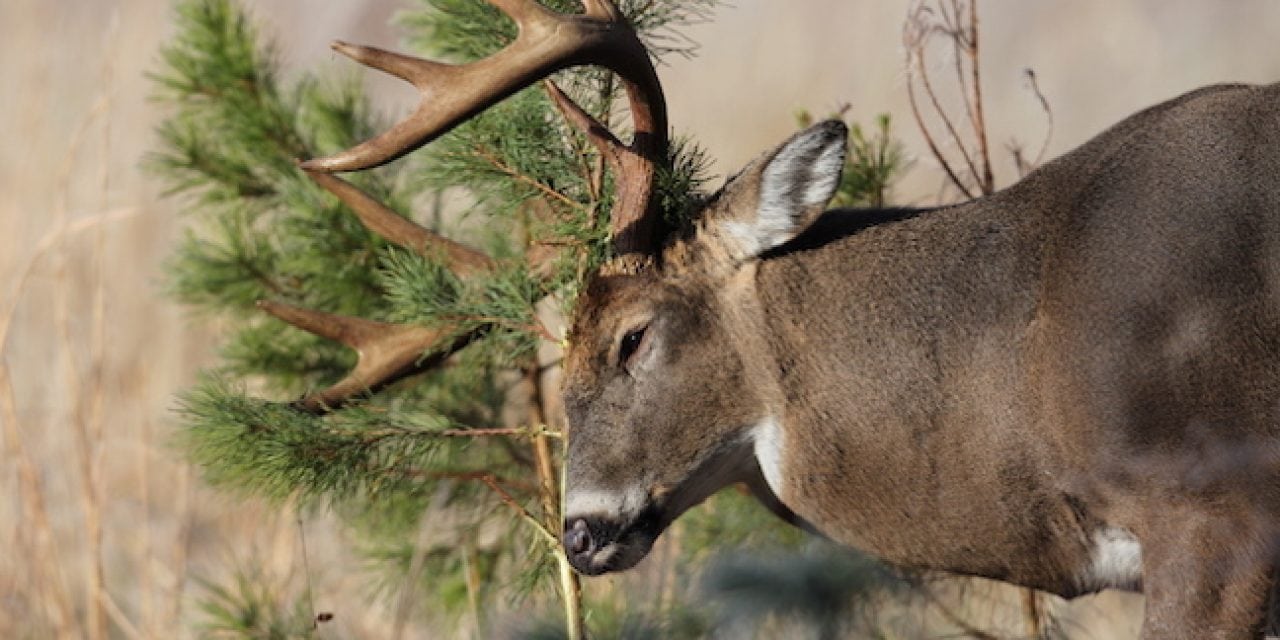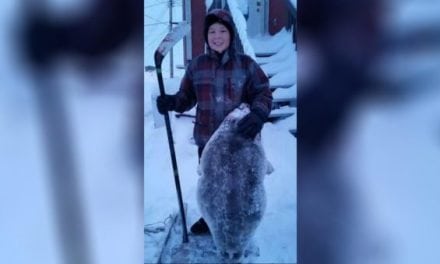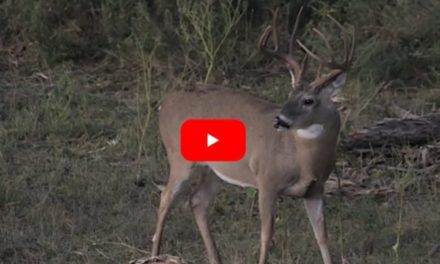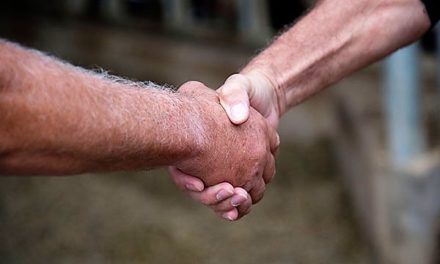Fulfill your dreams of owning your own deer hunting land. Here’s how to do it the right way.
Almost without exception, anyone who has ever picked up a bow, muzzleloader, shotgun, or rifle and headed afield during the fall has shared a dream:
To someday own the land they hunt on.
Whether it’s walking out the back door and into a stand or a 60-minute drive to a hidden jewel, complete with beautiful hardwoods and small secluded meadows — and let’s not forget that year-round creek — owning a piece of property can make all the difference in the world, regardless of whether the goal be trophies or tablefare.
“Call me biased, but I can’t think of any great pitfalls that come with owning hunting property. In fact, I honestly believe that owning hunting land is one of the best things a person can ever do,” said Andrew Schultz. Schultz, 25, is a land specialist with Whitetail Properties (WP), a company that partners prospective buyers with hunting and outdoor recreation properties across the eastern two-thirds of the nation.
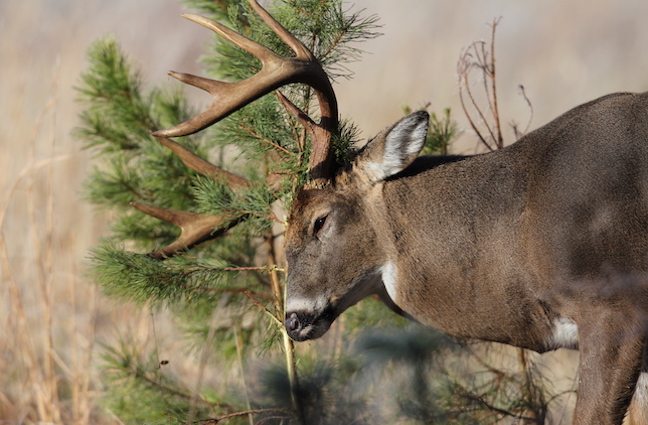
Properties with a good mix of habitat tend to grow top-quality bucks. (Photo by Ron Sinfelt)
“I started my career with Whitetail Properties three years ago in the marketing department, helping the land specialists get their businesses up and running. Today, buying and selling land is my full-time job,” said Schultz, who currently oversees properties located throughout nine counties.
But isn’t the process of becoming a land baron, per se, a complicated thing, radically different and much more difficult than is buying a traditional home?
As you’ll see, the purchase of hunting property, like buying a dream home, is a step-by-step process; relatively simple and painless — if, that is, one includes a property professional such as Schultz and his colleagues at Whitetail Properties.
“The first step for everyone involved, myself and the buyer, is for both of us to come to a better understanding of what will be done with the property,” said Schultz. “What are the goals and objectives? How much acreage is a typical starting point? You can do a lot with 100 acres, but not everyone can afford 100 acres. Sometimes, 20 acres is all you need. And realistically, and if everything’s done right, you can buy 10 acres and kill big deer passing through from farm to farm. It all depends,” he continued, “on your goals and what you can afford.”
Is growing big whitetails a major priority? Is not only growing trophy bucks but also keeping them on the property a desire? Will you be building a hunting cabin? A home? Staying off-site and then driving to the property each morning to hunt? And ultimately, how many people will actually be hunting the property?
“We’re going to talk,” said Schultz, “so that I can have the very best understanding of exactly what you want to do with the property. What your perceptions and expectations are. And then I’m going to look at what’s available, and find you the best property based on your goals and your finances.”
The next move is Schultz’s.
“We’re going to look at some farms on paper,” said the specialist. “We’re going to discuss the pros and cons of each one, and then we’re going to go out and actually look at them. And this is such an important step because seeing the property (in person) can drastically change what a prospective buyer thinks of that property.”
And here is where the experts at Whitetail Properties truly start to come into their own.
“We are specialists,” said Schultz. “We know the properties. We can help identify aspects of each, and assist the buyer in creating their vision for that particular piece of land. Every farm,” he continued, “is different in terms of what can and should be done. Government programs, for instance, such as the Conservation Reserve Program (CRP) can be an option in some cases. Our land specialists are familiar with these programs, and can point buyers in the right direction should there be a desire for a return on investment such as timber (sales), CRP enrollment, or agricultural ground rental.”
At this juncture, buying land, says Schultz, isn’t much different from purchasing a home in terms of financial preparedness on the part of his client.
“Pre-approval and a letter of pre-approval are invaluable,” said Schultz, “and perhaps the best thing a buyer can do in advance (of a purchase). Pre-approval says, ‘I’m serious and I’m looking to buy,’ and that can make a world of difference to a seller when it comes to the negotiation process.”
Also in terms of financing, Schultz recommends a buyer attempt to work with a lending institution experienced in transactions dealing with vacant land or farmland. And be prepared for a higher down payment when finalizing the sale of bare property; 20 percent, said the specialist, vs. the traditional 3 to 10 percent down on a residence.
“But we can help buyers explore any and all down payment options or opportunities,” said Schultz.
Location, location, location
It’s the mantra of real estate professionals worldwide, and likewise a primary concern for land specialists like Schultz and the clients they represent. But where, the question arises continually, should this “ultimate hunting property” be? A short walk beyond the back porch might be wonderful, but is it realistic? Or even desirable? And a three-hour drive from home to a hunting cabin? Is it too far? Not far enough?
“Where the property is — how far from home — truly depends on the client and what they want to do,” said Schultz. “If they’re hands-on and want to directly manage the property themselves, then obviously the closer, the better. Often, a drive can get old rather quickly if you’re trying to manage the property yourself. However, some buyers may hire land managers, and thus live a distance away. Or some,” he continued, “have a hands-off approach to land management, and don’t mind driving four or five hours to go hunting a few times each year. In this situation, distance is (almost) irrelevant. Honestly,” he concluded, “the distance matters to some, and to others, it just doesn’t.”
It should come as no surprise, perhaps given the moniker — Whitetail Properties — that much of Schultz’s business focuses, either directly or indirectly, on outdoors enthusiasts interested in, if not fanatical about, hunting deer. “A large majority of our clients,” said the specialist, “hunt whitetails, but that number or percentage can vary from from area to area. I’ll say that at least 80 percent of the properties I’ve sold have had something to do with whitetails.”
And not just any whitetails or just your average out-on-opening-day -only deer hunter. These are whitetail specialists, individuals dedicated to creating an environment not only conducive to deer in general, but also capable of growing some of the finest whitetail bucks in the country.
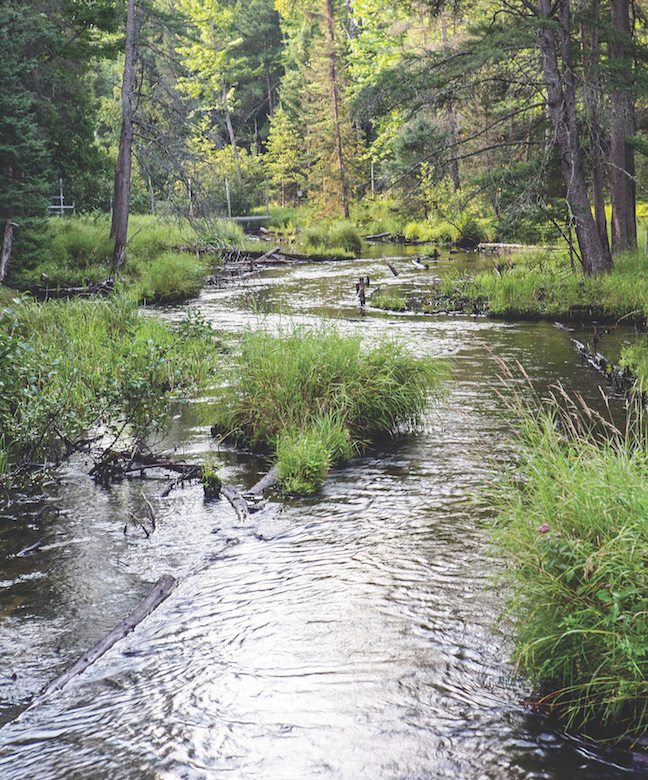
For many hunters, a year-round stream is part of the land-buying dream. (Photo by Ron Sinfelt)
With this in mind, Schultz finds himself fielding a barrage of questions directly relating to a property’s ability to provide that which these whitetail enthusiasts seek: questions concerning the property’s previous owners. The neighbors. Did they hunt deer? Do they hunt deer currently? Has the property yielded any trophy animals, and if so, when? What are the details? To Schultz, such inquiries are vital to the development of a hunting property package as a whole, and he suggests they should be to prospective buyers, as well.
“How important are these questions? They’re extremely important,” he said. “The last thing I want as a professional in this business is to help someone buy a property, and then have them decide they didn’t want it for Reasons X, Y, and/or Z. To this end, I meet with the seller repeatedly. I ask the questions, and look for the information — the answers to these questions. I’m a good listener. I like to hear about that old rickety stand where four Boone & Crockett bucks were taken. It’s my responsibility,” he continued, “to ask the right questions of the seller, so I in turn can provide that information to the buyer. You’re never going to get all the information (prior to a purchase), but you need to know as much as possible.”
Property history, said Schultz, is a variable most clients want to know, particularly clients focusing on the cultivation of trophy whitetails. Schultz gets those details himself. “It’s important that I know the area and have relationships with the local people,” said the specialist. “The history of a property is something I’m always discussing with the landowner/seller. This is the individual who can tell me about the neighbors or the record-book buck that was killed on an adjoining farm. Do the neighbors hunt deer, and if so, do they practice Quality Deer Management or something similar? If so, then you could conceivably buy that 20 acres adjoining these neighbors, coordinate your programs with theirs, and literally walk into a gem (of a property).”
Buying a piece of property — a proverbial slice of Whitetail Heaven — is the dream of many a hunter across the country.
For those who do, it’s often the culmination of a lifetime of hard work, preparation, research, and pinching each and every penny, wherever and whenever possible. The professionals at Whitetail Properties certainly simplify the process, making that which at first appeared unattainable a reality.
“I hear so many great things from the clients I’ve worked with,” said Schultz. “Property is an investment, and life does throw curves at us from time to time. But,” he said, laughing, “you’ll never get great trail camera photographs by buying rental apartment properties.”
The post Expert Tips: Buying Great Deer Hunting Land appeared first on Game & Fish.

